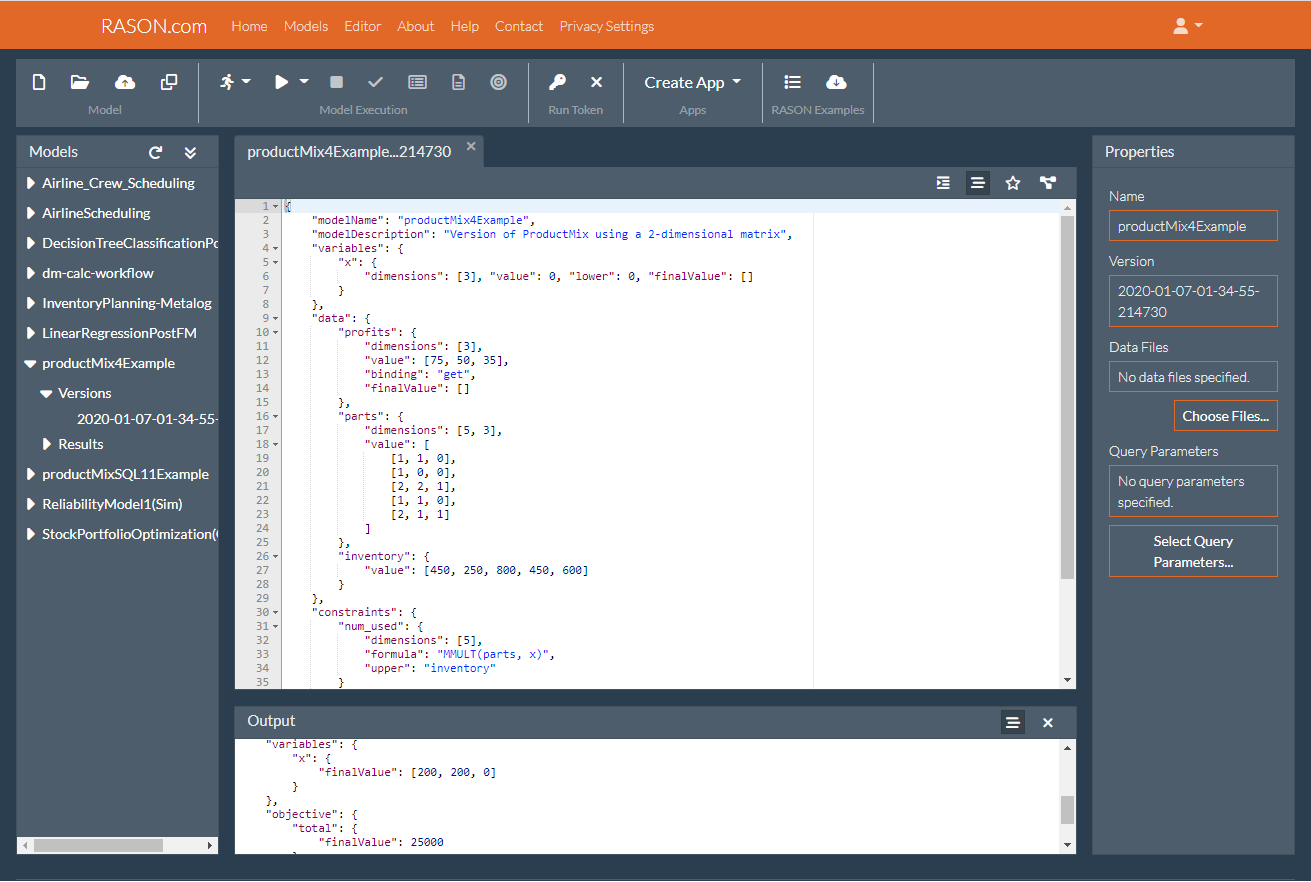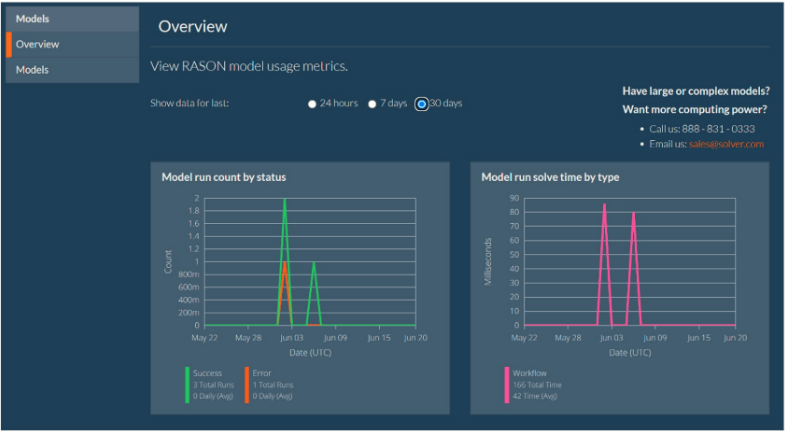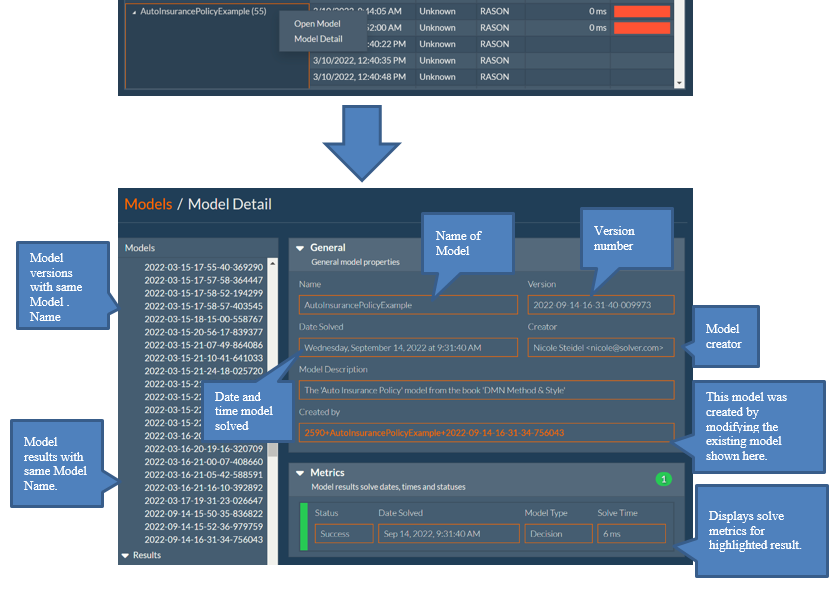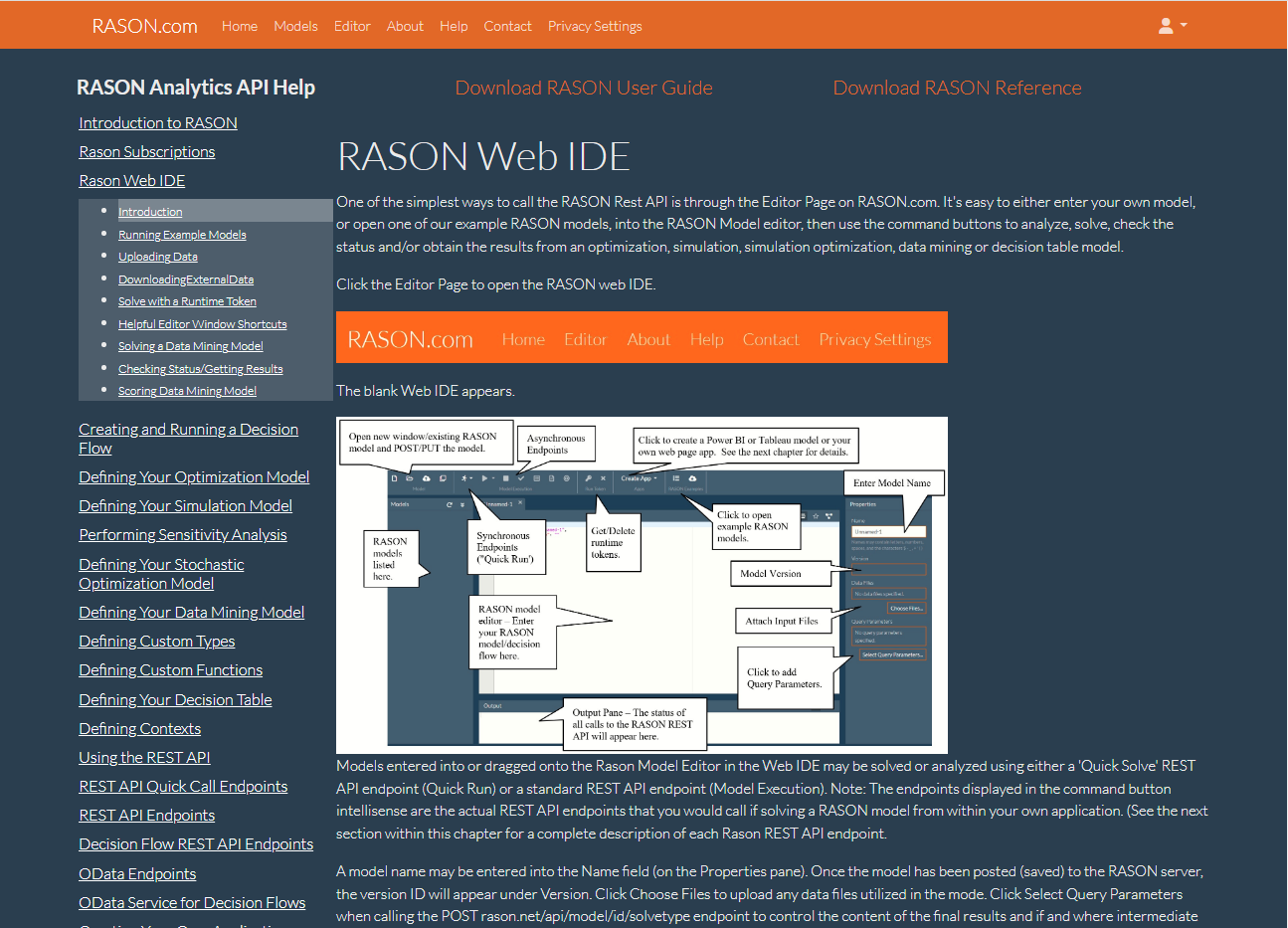We've just released RASON® V2023, along with Analytic Solver® V2023 and Solver SDK® V2023. All three products include major enhancements -- including patent-pending, automated risk analysis of machine learning models. And all three products support each other: RASON accepts and runs Excel workbook models created with Analytic Solver; Analytic Solver Cloud version relies on RASON to execute optimizations, simulations, and data mining / machine learning operations; and RASON actually runs Solver SDK in the Azure cloud to perform these operations. But in this post, we'll focus on enhancements to model management that are unique to RASON V2023.
Some of our customers who have never tried RASON may not appreciate what it is, or what it offers: RASON (RESTful Analytic Solver Object Notation) offers (i) a high-level language for defining analytic models, independent of Excel but "Excel-friendly"; (ii) cloud compute services that enable you to update models with new data and solve them; (iii) flexible ways to enable other applications to run your models "on demand", retrieve and use their results (via REST APIs, JSON and OData); and (iv) tools to manage a group of predictive, prescriptive and decision models, model versions, and runs in production. To illustrate, here's what you'll see if you login at Rason.com, click on Editor, and open the Product Mix example from the list of examples:

This model is written in RASON's high-level modeling language. It uses data embedded in the model definition -- a better approach is to retrieve the data via a RASON Data Connection from a separate CSV file, SQL Azure database, the Common Data Service, or another of the 100+ data sources that RASON supports. The Output area shows the results of solving this model via a single REST API call: An application program could make this call from JavaScript code, but you can make the same REST API call by just clicking one of the buttons in the Ribbon at the top of the Editor window. To learn more, click the Help link in the top orange stripe and read RASON's extensive online Help, or download its User Guide and Reference Guide in PDF form.
The RASON language syntax is embedded in JSON – making it easy to use in JavaScript, Web and mobile applications. But “inside quotes”, you can directly use four familiar open standards: business rules in DMN (Decision Model and Notation) and FEEL (Friendly Enough Expression Language), machine learning models in PMML (Predictive Modeling Markup Language), probability distribution models in SIPMath 3.0 from ProbabilityManagement.org, and the Microsoft Excel expression language, using virtually any Excel formula or built-in function.
In the Editor on the left, you can see a list of models (and for one model, its versions and results from solving) for a single user's account. A company can use a RASON Organization Account to organize and manage a set of authorized users, their models and versions (or models meant for "development" versus "production" use), and runs of those models: Each user's models are maintained in an Azure container, and an admin can control permissions for each user.
Clicking the Models link in the top orange stripe (new in RASON V2023) gives you access to RASON's new model management features. The initial Overview display gives you a summary of model runs by status (success or error) and solve time by type (optimization, simulation, data mining / machine learning, or multi-stage "workflows" as shown below):

Clicking Models on the left displays a catalog or list of your models -- in a RASON Organization Account, each user sees his/her own models, while an admin can see all models. The catalog includes models written in the high-level RASON modeling language (these can include expressions in DMN FEEL and the Excel formula language); Excel workbook models with RASON REST API "wrappers"; previously-trained machine learning models ("Fitted Models") in PMML or native JSON form; and probability models in SIPmath 3.0 JSON form. The model listing can be grouped, filtered and reordered in many ways, as indicated in the diagram below (from RASON Online Help).

Right-clicking for Model Detail (provided the logged-in user has appropriate permissions for this model) yields a display like the one below, showing the model's history, versions, runs, and solve metrics. Users with appropriate permissions can also open the model directly in the RASON Editor from here.

There's much more in RASON V2023, including our new (patent-pending) automated risk analysis of machine learning models. To give you a little more encouragement to visit Rason.com and click on Help, here's one more image from that Online Help:

